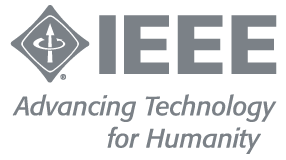Professor Errol Wirasinghe, an expert in decision-making and negotiation and TVLP Institute’s Faculty member, shares various case studies that deliver peculiarities and pitfalls when facing decision-making, problem-solving, and negotiation processes. In this article Dr. Wirasinghe provides insights on three critical elements match when dealing with decision-making: Decision maker – Data – Environment.

As the decision-maker, you must make some assumptions on what criteria (factors) are relevant and then interpret the data pertaining to the candidates (potential/possible solutions) in the prevailing environment. Your interpretations will depend on your culture, education, training, values, beliefs, resources, status, image, relationships, health, skills, time constraints, context, emotional state, neurological limitations, etc. Thus, irrespective of what tools and techniques you use, the decision-makers limitations and biases will be an inevitable part of all his/her decisions.
You and Inevitable Comparisons
Let us start by recognizing that all decisions are based on comparisons to things we are familiar with. Even when we have never been exposed to such an environment, we compare it to something else that we think is related.
Your Assumptions (Criteria)
When framing a problem, your assumptions reflect your understanding of the problem and what you consider relevant—these manifest as criteria that drive the decision.
When President Bill Clinton was told that the Mexican peso was about to collapse, he asked his advisors for an assessment of the situation. Some of the criteria (consequences) presented were:
Uncertainty of Data (Probability)
Data, on the other hand, is associated with the candidates. You have no control over the data except in what data you gather (or have access to) and how you interpret this data. Data and information are fraught with inherent uncertainties.
The Decision-Making Process
For most people, the decision-making process involves common sense, logic, intuition, pre-cognition, gut feeling, perception, judgment, rules, laws, divine intervention, etc. Sadly, these are inadequate in today's world of information overload. When making decisions that have serious consequences, it is vital that we use robust, proven, analytical techniques to reinforce our logical intuition-based judgments. Any serious decisions we make must be defensible, optimal, consistent, and timely (DOC decisions).
Validating the Decision
Most decisions in the corporate world have to be approved by a higher authority. Hence your decision must be defensible. It isn't easy to defend a decision that has not been validated. The validation process explores the sensitivity of the decision to the assumptions, data, and biases. Such an analysis must address the following:
Errol Wirasinghe, Ph.D.
Dr. Wirasinghe has over 25 years of experience in Optimization, Creative Thinking, Opportunity
Seeking, Decision-Making, and Strategic Planning for Shell Oil Co., Petroleos de Venezuela,
Abu Dhabi National Oil Co., British Gas, Williams, and Enron. As an Oil & Gas industry specialist and a University Professor, Wirasinghe has published papers on topics relating to Management, Engineering, and Economics. He is faculty member at the TVLP Institute in California.
Photo credit: Unsplash

As the decision-maker, you must make some assumptions on what criteria (factors) are relevant and then interpret the data pertaining to the candidates (potential/possible solutions) in the prevailing environment. Your interpretations will depend on your culture, education, training, values, beliefs, resources, status, image, relationships, health, skills, time constraints, context, emotional state, neurological limitations, etc. Thus, irrespective of what tools and techniques you use, the decision-makers limitations and biases will be an inevitable part of all his/her decisions.
You and Inevitable Comparisons
Let us start by recognizing that all decisions are based on comparisons to things we are familiar with. Even when we have never been exposed to such an environment, we compare it to something else that we think is related.
- When you say, "He is a tall person," even in the absence of a tall person in the vicinity, you mentally compare him to yourselves or to folk you had encountered in the past.
- When judging a dance competition, a judge cannot avoid comparing the current performer to previous ones.
- If offered two investment opportunities, one yielding 6% and another 8%, with volatilities* of 0.8 and 1.2, respectively, one person might accept the higher return despite the higher risk, while another might not. It depends on the individual's "environment" and "risk tolerance." Here again, we make a comparison.
Your Assumptions (Criteria)
When framing a problem, your assumptions reflect your understanding of the problem and what you consider relevant—these manifest as criteria that drive the decision.
- When buying a house, you might consider criteria such as price, crime, pollution, schools, distance to work, re-sale potential, etc.
- When deciding on a car, you might consider criteria such as price, status, comfort, fuel economy, resale value, maintenance cost, insurance cost, safety, etc.
When President Bill Clinton was told that the Mexican peso was about to collapse, he asked his advisors for an assessment of the situation. Some of the criteria (consequences) presented were:
- Image – international condemnation; a rich neighbor standing by while a poor neighbor was drowning
- Immigration – About 6 million Mexicans walking across our southern border
- Drugs – Increase of drug trafficking to support the needy
- Democracy – Overthrow of a democratic government, etc.
Uncertainty of Data (Probability)
Data, on the other hand, is associated with the candidates. You have no control over the data except in what data you gather (or have access to) and how you interpret this data. Data and information are fraught with inherent uncertainties.
- When we say "it might rain today," – we might mean there is a 70% probability of rain (uncertainty).
- If we say, "The unemployment rate in 2024 is expected to be 5%", we must also state the likelihood (probability) of this happening.
- There is an x% probability (uncertainty) that the project would not go over budget.
- Experts say there is a 60% chance that the host Nation will win the next FIFA world cup.
The Decision-Making Process
For most people, the decision-making process involves common sense, logic, intuition, pre-cognition, gut feeling, perception, judgment, rules, laws, divine intervention, etc. Sadly, these are inadequate in today's world of information overload. When making decisions that have serious consequences, it is vital that we use robust, proven, analytical techniques to reinforce our logical intuition-based judgments. Any serious decisions we make must be defensible, optimal, consistent, and timely (DOC decisions).
Validating the Decision
Most decisions in the corporate world have to be approved by a higher authority. Hence your decision must be defensible. It isn't easy to defend a decision that has not been validated. The validation process explores the sensitivity of the decision to the assumptions, data, and biases. Such an analysis must address the following:
- What is the impact of each criterion on our decision? Can we do without a particular measure?
- How sensitive is the decision to the assumed probabilities (uncertainties)?
Errol Wirasinghe, Ph.D.
Dr. Wirasinghe has over 25 years of experience in Optimization, Creative Thinking, Opportunity
Seeking, Decision-Making, and Strategic Planning for Shell Oil Co., Petroleos de Venezuela,
Abu Dhabi National Oil Co., British Gas, Williams, and Enron. As an Oil & Gas industry specialist and a University Professor, Wirasinghe has published papers on topics relating to Management, Engineering, and Economics. He is faculty member at the TVLP Institute in California.
Photo credit: Unsplash


















